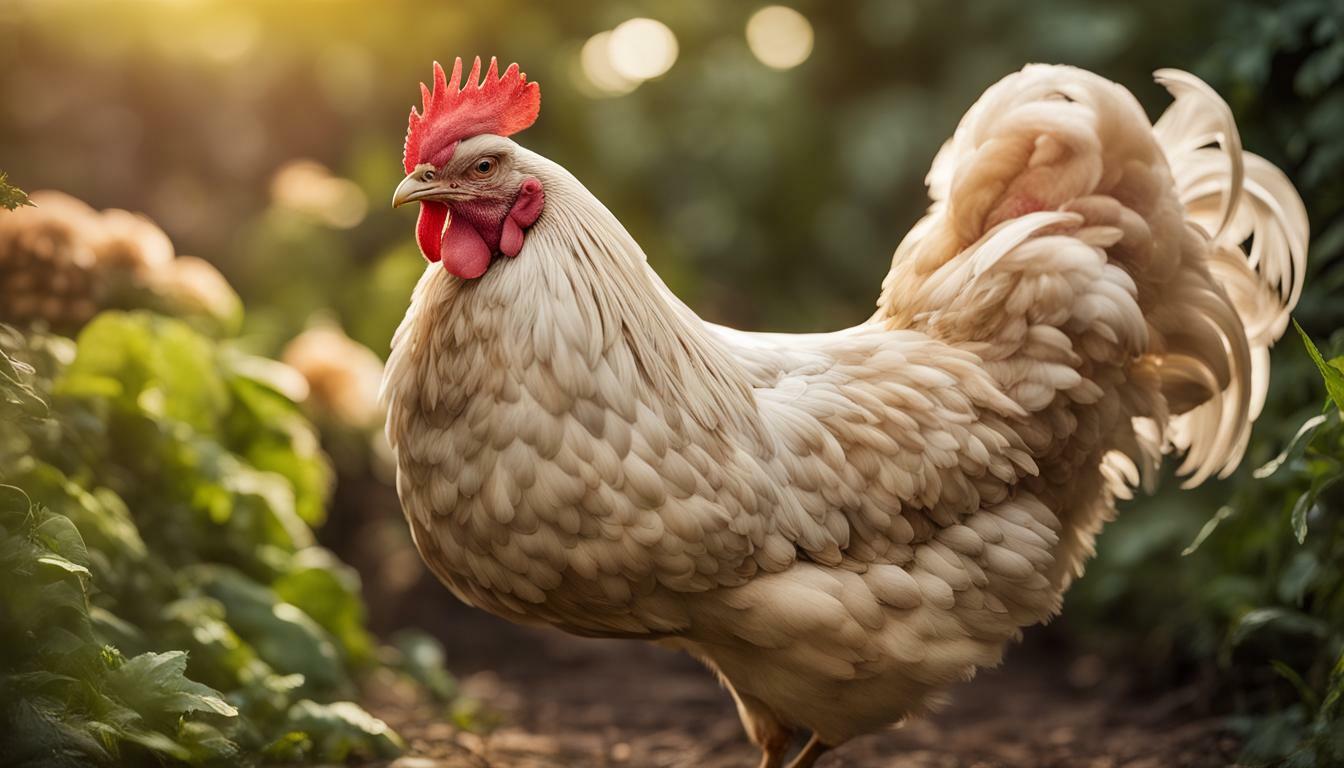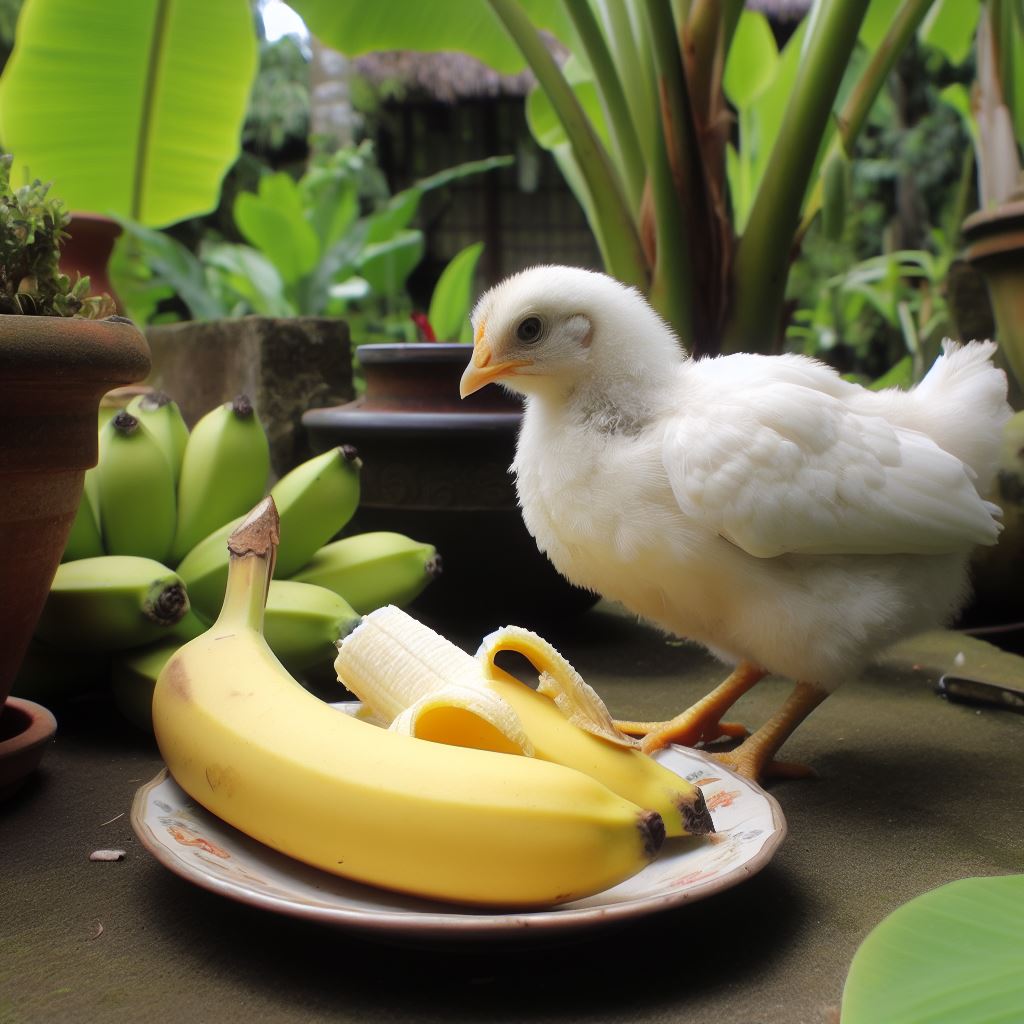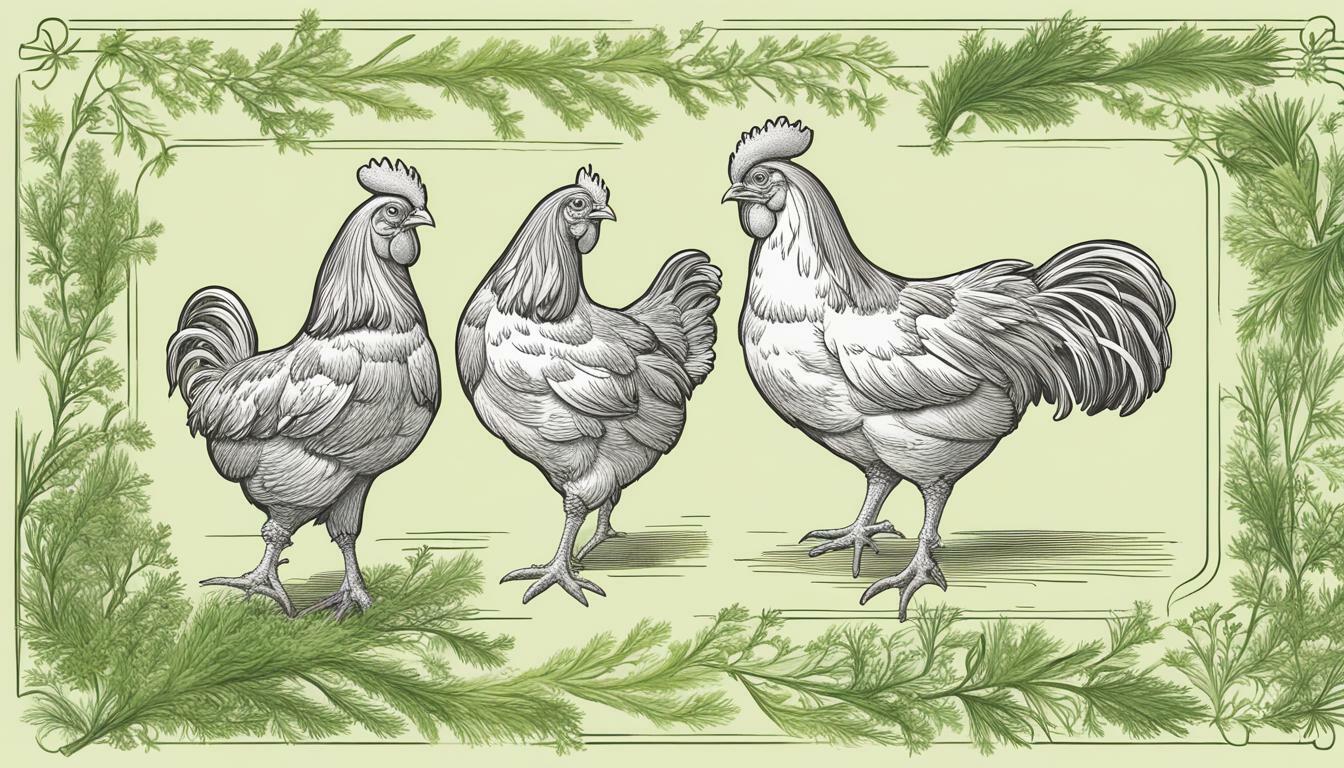Do Chickens Have Tails? Explore the Fascinating Facts!

Table of content:
Have you ever closely examined a chicken and noticed their tiny, stubby tail? While inconspicuous, chickens do in fact have tails. In this blog post, we’ll take a closer look at the oft-overlooked chicken tail and discuss why chickens evolved to have such petite tails.
An Introduction to Chicken Tails
At first glance, it may appear that chickens are missing a tail. But they do possess a small tail; it is just dwarfed in size compared to the prominent tail feathers sported by peacocks and turkeys.
The chicken’s tail is covered in smaller contour feathers and extends just an inch or two past the base of the back. You can easily identify the chicken’s tail by looking above the uropygial gland, an oil-producing gland near the base of the tail which chickens use to preen their feathers.
So what does a chicken tail look like? Imagine a furry, feathered nub similar to your fingertip. The chicken tail is so small and compact that it does not obstruct mating or get in the way of egg-laying.
Why Chickens Evolved Small, Inconspicuous Tails
You may be wondering, if many bird species have large, showy tail feathers, why did chickens evolve to have such tiny, unassuming tails? There are a few theories as to why chickens have petite tails:
- Mating – Roosters must mount directly on top of hens to mate successfully. Large tails would get in the way of this process. The tiny tail provides balance but does not obstruct mating.
- Nesting – Broody hens need to cover all their eggs while nesting. A sizable tail could get in the way of settling onto the nest. The tiny tail allows for close nesting without obstructing egg coverage.
- Foraging – Chickens spend much of their day scouring the ground for food. A long tail would drag and get dirty. The stumpy tail stays out of the way while foraging.
- Flight – Ancestors of modern chickens could fly short distances. A large tail would have created unnecessary drag and weight, hampering lift and flight.
So in essence, the chicken’s small tail allows for balance while not obstructing key functions like mating, nesting, perching, and foraging. While other flashy bird tails serve to attract mates, the modest chicken tail serves more utilitarian purposes.
Features and Functions of the Chicken Tail
While petite, the chicken’s tail does serve some important functions:
- Balance – The tail helps stabilize chickens while moving about on land. Chickens use their tails similarly to how tightrope walkers use a balancing pole.
- Mating – As mentioned above, the tail gets out of the way for successful mating while still providing stability.
- Protection – The tail protects the uropygial gland as well as the hen’s backside during mating.
- Feather Attachment – Tail feathers attach to quills extending from the stubby tail. These feathers aid in insulation and repelling water.
- Preen Gland – The base of the tail provides a place for the preen gland, which supplies oil chickens use when preening feathers.
So while it may seem insignificant, the chicken’s tail supports balance, protection, and other functions. And it manages to do this without obstructing other behaviors.
Can You Remove a Chicken’s Tail?
Some chicken owners wonder – can you remove a chicken’s tail? The answer is yes. In fact, the tail is sometimes removed for aesthetic purposes with ornamental chicken breeds before poultry shows.
However, there is no practical reason to remove a backyard chicken’s tail. Doing so will not impact egg production and serves no health or hygiene purpose. Removing the tail will only impact the chicken’s balance temporarily.
If you do remove a chicken’s tail, it will not grow back. While the tail bone remains, new tissue and feathers will not regenerate. So after removal, the chicken will just have a featherless nub.
Most chicken owners agree removing tails is an unnecessary practice that provides no benefit to the chicken. Unless showing an ornamental breed, the tail is best left in place to aid in balance and hygiene.
Fun Chicken Tail Facts
Now that we’ve covered the purpose and functions of the chicken tail, here are a few more fun facts about this petite poultry appendage:
- Chicken tails come in different colors and patterns depending on the breed. Some tails are solid black, white, brown, orspeckled.
- Silkie chickens have tails covered in fluffy feathers that resemble pom poms.
- Only a few chicken breeds have long, elaborate tails similar to turkeys and peacocks. These include Phoenix, Yokohama, and Onagadori chickens.
- Chicks are born with a tiny nub of a tail that remains proportional as they mature.
- Though small, blood vessels and nerves run through the tail. Chickens can feel sensations in their tails.
- Some chicken keepers fit their birds with tail covers to keep the area clean. However, this is not commonly done.
- Large tails on chickens are generally impractical. One exception is using feather dusters made from chicken tail feathers!
Why Chicken Tails Are Important, Despite Their Size
In conclusion, while chicken tails are petite and easy to overlook, they do serve some key purposes for chickens. The tails aid in balance, mating, and offer some protection without obstructing other behaviors.
So next time you gaze at a chicken, take a second look at that stubby feathered tail. While it may not be flashy, it is a practical appendage allowing chickens to go about their daily habits unencumbered.
Final Thoughts
The humble chicken tail may not turn heads, but it has evolved to help chickens thrive while going about life on land. Sometimes modest features can offer the greatest functional support.
So the next time you notice something small or ordinary, don’t underestimate its hidden purpose. With closer examination, you may discover an ingenious function you never knew was there all along. Such is the case with the unassuming but practical chicken tail!
Welcome. I’m Adreena Shanum, the proud owner of this website, and I am incredibly passionate about animals, especially poultry. I founded adreenapets.com as a labor of love, stemming from my desire to share my knowledge and experiences with poultry enthusiasts worldwide.




